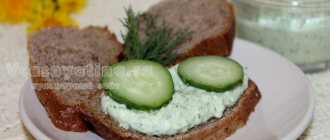A low-carbohydrate diet is an eating pattern aimed at controlling the intake of carbohydrates into the body. In this diet, proteins (proteins) will be the main food. They break down slowly and thanks to this, even small portions of food take a long time to digest, ensuring long-term satiety. This nutrition plan is successfully used by athletes when preparing for competitions, as well as by bodybuilders who need to “dry” their body and make their muscles sculpted and beautiful.
This type of nutrition has also gained great popularity among those people who want to get rid of extra pounds. This type of diet will be of interest to all people who dream of always being in shape, as well as becoming beautiful and slim.
Description
A no-carb diet is a diet that restricts or eliminates carbohydrates. The history of this type of nutrition goes back to ancient times. Back then, athletes ate meat and gave up vegetables and fruits. Thus, they gained muscle mass and got rid of fat deposits.
General principles
In the human body, carbohydrates are the main sources of energy that are actively involved in accelerating metabolism. If a person refuses the main sources of nutrition, the body switches to other sources. The result will exceed all expectations - up to 10 kilograms will be lost without difficulty.
The basic rules of a low-carb diet are as follows:
- Eating without fasting.
- Eating food in small portions, five times a day.
- Fluid consumption rate is at least 1.5 liters per day. After eating, you can drink water half an hour later.
- Eat food 2-3 hours before bedtime.
- Use small amounts of olive oil for frying foods.
To reduce the amount of carbohydrates, you need to give up some foods that contain them.
The body's response to carbohydrate withdrawal
For several days of restriction, the body does not show any changes. Weight remains at the same level, or may decrease to a minimum. At this stage, the body gets used to the new way of eating.
To get rid of fat deposits quickly, the amount of carbohydrates is limited. With their deficiency, the body processes complex glycogen that accumulates in the liver and muscles. The body's system switches to destroying fats, producing ketones. These are substances that suppress appetite and prolong satiety. Fatty fiber is broken down, causing a person to lose weight. How does the body react to a lack of carbohydrates? The calorie content of carbohydrates is high, so limiting their consumption reduces the calorie content of foods consumed. This is especially true for people engaged in sedentary work and leading an inactive lifestyle.
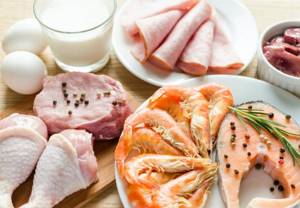
Advantages and disadvantages
Any diet has its advantages and disadvantages. Eating without carbohydrates has a lot of advantages, if followed, weight loss results are guaranteed:
- They eat ordinary foods and simple dishes made from them.
- Affordable cost and carbohydrate counting.
- You can prepare a variety of non-repetitive dishes from permitted products.
- Following a diet is a condition for achieving the effect.
However, a person may like this way of eating, but the body does not. The disadvantages of this diet include the following factors:
- Protein consumption puts a strain on the kidneys and liver, which will worsen chronic diseases.
- Carbohydrates make up vitamins, minerals and fiber. During the diet, their quantity is replenished through the use of drugs.
- The body will “want” sweets, which will not be easy to fight.
- Side effects of the diet appear: weakness, constipation and poor health.
Water, which must be consumed in quantities of at least 1.5 liters per day, will help to avoid unpleasant consequences. It is not recommended to stretch such a diet for a long time. And most importantly, you need to set yourself up; this moment in the process of any weight loss is very important.

What is a low-carbohydrate diet: principles and rules
The basic principle of the nutrition system is built around the fact that you can only eat foods that do not contain carbohydrates. To be more precise, only those substances that have the highest glycemic index are completely excluded, and some vegetables that are needed to introduce vitamins and fiber into the body are considered acceptable in small quantities.
The correct scientific name for a carbohydrate-free diet is ketone, ketogenic, or simply keto diet. It was invented by cardiologist Robert Atkins to treat and reduce the number of seizures in patients suffering from epilepsy at the dawn of the twentieth century, when anticonvulsant drugs did not yet exist. Doctors discovered that along with the relief of seizures, patients lost weight literally before our eyes. After the release of the feature film Do No Harm, based on the real life events of director Jim Abrahams and his son, keto nutrition has become popular among ordinary, healthy people.
The essence of the process is quite simple: replace carbohydrates that are easy to process into energy with heavier, fatty foods. Normally, our body converts glucose and feeds it to the brain and everything else. The lack of material for processing forces the body to look for an alternative, and it is found in the form of processing the very fat reserves that it has so carefully accumulated over the years on the stomach and sides.
The liver begins to break down fats, producing glycerol and fatty acids, which ultimately make up ketone bodies that nourish the body and brain. This process is called metabolic ketosis among specialists. Thus, the process of glycolysis (breakdown of sugar) in the body is suspended, and the era of lipolysis (breakdown of fats) begins.
Rules and regulations
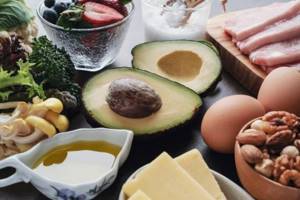
A special advantage of this style of eating is that you lose weight by burning your own reserves of adipose tissue, while protein remains intact. Therefore, a low-carbohydrate diet is well suited not only for a normal lifestyle, but also for those who work hard physically, engage in strength sports, and lead a super-active lifestyle.
Since it would be wrong and even wrong to completely exclude carbohydrates from the diet, it is worth limiting their amount to the optimal minimum, which is approximately 5% of the norm of calories consumed per day or about 20-30 grams per day. On average, your diet should look something like this:
- Fats – 75%.
- Proteins – 20%.
- Carbohydrates – 5%.
You can include nuts, vegetables, seeds and other foods with a low glycemic index in your diet.
Low-carbohydrate diet: list of foods that you can
- Pork and beef.
- Fish and seafood.
- Bird and game.
- Salo.
- By-products (kidneys, liver, heart, brains).
- Milk and lactic acid products.
- Cereals (buckwheat, millet).
- Eggs.
- Greens (dill, parsley, lettuce leaves).
- Dried fruits and nuts (prunes, dried apricots, cashews, peanuts, walnuts, hazelnuts).
- Fruits (green apples, oranges, sweeties, pomelo, lemons, peaches).
- Tea coffee.
- Vegetables (all types of cabbage, radishes, onions, garlic, cucumbers, squash, zucchini, eggplant, peas, asparagus).
Low-carbohydrate diet: list of foods that are not allowed

- Sugar.
- Carbonated drinks.
- Industrially produced juices, bottled sweet water.
- Ice cream.
- Sweets and confectionery.
- Baking, muffins, bread.
- Pasta, vermicelli.
- Cereals (wheat, barley, oatmeal, rice, corn, semolina, etc.).
- Trans fats.
- Skim milk and dairy products.
- Semi-finished products.
- Products containing fructose or sorbitol.
- Frozen or refined vegetable oils.
- Sausage.
- Vegetables containing a lot of starch.
- Honey.
- Crab sticks.
- Preservation and pickling.
Contraindications
Before starting any diet aimed at combating excess weight, you must consult a doctor. This appeal is especially necessary for those people who have health problems. Pregnant women and nursing mothers are strictly prohibited from using a carbohydrate-free diet.
In addition, contraindications apply to the following cases:
- Cardiac and vascular pathologies.
- Diseases of the kidneys and bladder.
- Diseases associated with improper functioning of the digestive organs, liver and pancreas.
- Recent surgeries.
People who experience an allergic reaction to protein should also not resort to this method of losing weight.
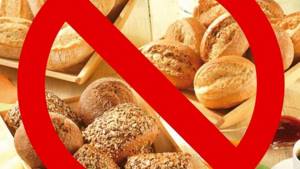
The benefits and harms of a diet without carbohydrates
To figure out whether you personally need such nutrition and why it is used, it is worth finding out the positive aspects and contraindications.
Indications and positive effects

- Reducing your sugar intake has a positive effect in the treatment of diabetes of any type, and will also be a good prevention for it.
- Due to the fact that with a low-carbohydrate diet the body burns its own fat, the weight loss process is much faster than with any other nutrition system.
- By losing excess subcutaneous fat, as well as its deposits on internal organs, the body restores normal blood pressure, which is usually elevated in obese people.
- The body begins to produce ketones instead of glucose. Many say that they become the best food for the brain and activate its work.
- Fatty and meaty foods consumed on a diet saturate the body better, allowing you to avoid the nagging feeling of hunger for longer.
- People prone to seizures and epilepsy experience a persistent decrease in the number of seizures, and sometimes their complete cessation.
- By reducing the level of subcutaneous sebum, the skin becomes much healthier, more elastic, younger, and looks more well-groomed.
Contraindications and harms of a low-carbohydrate diet
- Pathologies of the kidneys and liver.
- Chronic diseases of the stomach and gastrointestinal tract in general.
- Pregnancy and breastfeeding.
- Persistent metabolic disorders.
- Diseases of the immune and endocrine system.
- Diabetes mellitus type 1.
- Persistent deficiency of certain proteins.
In addition to contraindications, some negative effects may also occur when following a diet without carbohydrates; we should not forget about them:
- Weakness and dizziness.
- Irritability, depression.
- Problems with the gastrointestinal tract.
- Excessive load on the liver and kidneys.
- Disturbance of carbohydrate metabolism.
- Increasing acetone levels.
Stages
A no-carbohydrate diet consists of 4 stages, among which at the first stage carbohydrates are limited, and in the remaining stages the result will be consolidated.
Description of stages:
- The first stage is the main one, its duration is two weeks. It is necessary to remove sugar, bread, alcohol and fruits from the diet. The body receives a minimal amount of glucose, fat cells are broken down, and the liver releases ketones, which replace glucose in the body. The process of losing weight begins.
- The second is the consolidation period. Add 5-6 grams of carbohydrates to your daily diet and monitor your weight changes. If the weight does not decrease, then you need to reduce the amount of carbohydrates again. As soon as the weight indicator reaches the desired value, you can stop.
- The third stage is conservation, continue to take foods in the same quantities, but you can change the food. The table of recommended foods will tell you how many carbohydrates you can eat on a low-carbohydrate diet. At this time, physical exercises that can tighten and strengthen muscles are effective.
- The fourth stage is the final one. At this time, it is necessary to ensure that carbohydrates are included in the diet in the required quantities. When leaving the diet, you must follow the principles of proper nutrition.
This type of diet chart will help you gradually and correctly remove the right amount of carbohydrates from your diet.

Kinds
In practice, several types of carbohydrate-free nutrition programs have proven themselves, each with their own individual characteristics:
- power;
- constant;
- circular;
- during pregnancy;
- no fat or carbohydrates.
Strength training is suitable for athletes; its essence is the consumption of carbohydrates before the training process. This gives the athlete strength before a heavy load. This type is justified only if the training intensity is intense, otherwise the athlete will not completely waste the carbohydrates received and will not lose weight.
During a constant diet, a person consumes no more than 20 grams of carbohydrates per day. Giving up carbohydrates completely threatens absent-mindedness, a decrease in the speed of perception and thinking.
A circular approach to nutrition involves limiting carbohydrates to 40 grams in the form of grains and vegetables. This restriction lasts 6 days, on the seventh day the body is “loaded” with complete carbohydrates. You can eat porridge, vegetables, pasta, and even a couple of fruits. This process stimulates metabolism and saturates muscle cells with glycogen.
During pregnancy, the menu is agreed upon with the doctor. A pure protein diet for expectant mothers is prohibited. Excess protein and lack of carbohydrates strain the kidneys and liver. The doctor will select the right nutrition that is safe for the child and mother.
Reducing carbohydrates and fats show good results. According to studies, participants in two experimental processes lost an average of about six kilograms.

How many carbohydrates can you eat with this diet?
On this type of diet, you need to eat carbohydrates in limited quantities. No more than 40 grams of carbohydrates should enter the human body daily. For the first week, it is better to consume no more than 20 grams of carbohydrates per day. Thanks to this, your metabolism will start faster and fats will be burned faster.
After two weeks of this type of diet, you can give yourself a couple of days of rest. At this time, it is necessary to saturate the body with carbohydrates, but do not eat sugar and sugar-containing foods. You should give preference to buckwheat porridge, fruits that are not listed in the main list (melon, peach, grapes) and nuts. At this time, the amount of protein consumed is reduced, that is, the volume of food at one time should not increase greatly so as not to stretch the stomach.
Tip: During rest days at home, you can prepare various porridges (oatmeal, millet and others), fruit purees and other dishes.
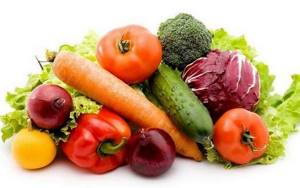
Products
Every product contains carbohydrates. In some ingredients their quantity is minimal, in others – maximum. A list of such products has been compiled.
Allowed
Products that can be consumed on a protein diet:
- lean meat, poultry;
- eggs;
- Fish and seafood;
- vegetables;
- greenery;
- unsweetened fruits;
- dairy products with 0% fat content;
- olive oil.
Prohibited
The following products are strictly not allowed on the menu of a low-carbohydrate diet for weight loss:
- sugar;
- wheat;
- sausages;
- canned food;
- sunflower oil;
- carbonated drinks;
- ice cream;
- candies.

List of prohibited products
In addition to the permitted ones, there is a list of prohibited foods that are harmful to your figure and health in general. During a low-carbohydrate diet, you need to give up store-bought juices, carbonated water, alcohol, products labeled “low-fat”, “diet”, fast food, canned food and frozen products, eliminate or reduce the amount of starchy vegetables (corn, potatoes, beets, carrots).
When planning your menu for the week, avoid the following high-carbohydrate foods:
| Name | Amount of carbohydrates in grams |
| White rice | 78,9 |
| Pasta | 69,7 |
| Vareniki | 18,7 |
| Dumplings | 29 |
| loaf | 50,9 |
| Wheat bread | 48,8 |
| Sugar | 99,7 |
| Candies | 67,5 |
| Semolina | 15,3 |
| Beer | 4,6 |
| Cola | 10,4 |
| Curd mass with raisins | 29,9 |
Sample menu for the week
A low-carbohydrate diet requires creating a menu for the week, and using it every day for a week. To prepare meals, you need to use simple recipes familiar to housewives. When preparing dishes, you can replace some ingredients with others that contain fewer carbohydrates. Snacks are allowed with fresh vegetables or fruits.
The first day:
- Breakfast: omelet with milk with 0% fat, carrot juice without sugar.
- Lunch: fish soup with vegetables, seafood cocktail, kefir 1%.
- Dinner: baked chicken breast, fresh vegetable salad, green tea.
Second day:
- Cottage cheese with berries, black tea.
- Meat borscht, vegetable stew, tomato juice.
- Beef, fresh cabbage salad, dried fruit broth.
Day three:
- Oatmeal with fruit, black coffee.
- Meat soup with buckwheat, steamed vegetables.
- Chicken chop, green beans, cherry compote.
Day four:
- Cottage cheese, herbal tea.
- Creamy chicken giblet soup, salad with egg and green onions, seasoned with sour cream, orange juice.
- A piece of fried fish, cauliflower, 0% yogurt.
Day five:
- Pumpkin pancakes with sour cream, radish and green onion salad, green tea.
- Kharcho soup with beef, stuffed cabbage rolls from minced chicken, decoction of dried fruits.
- Hard-boiled egg, vegetable stew, kefir.
Day six:
- Beef steak, cucumber, mineral water.
- Chicken broth, pilaf, tomato juice.
- Meat salad, grilled vegetables, black tea.
Day seven:
- Boiled rice, minced chicken meatballs, coffee.
- Soup with minced beef meatballs, boiled egg, rosehip infusion.
- Grilled mackerel, tomato and cucumber, yogurt.

Recipes
It’s easy to find original and easy-to-follow recipes for a low-carbohydrate diet, especially since you can diversify them as you wish.
Rabbit in sour cream sauce
This dish is nutritious, tasty and dietary, since rabbit meat belongs to this type of product.
To cook a rabbit, you need to take the following products:
- rabbit weighing 1 kg;
- 2 tbsp. l. olive oil;
- 1 medium onion;
- 0.5 tbsp. milk 0% fat;
- 50 g sour cream 9%;
- crushed nutmeg on the tip of a knife;
- 0.5 tsp. oregano;
- salt, herbs - to taste.
Step-by-step preparation:
- Cut the rabbit, cut the onion into half rings.
- Heat oil in a frying pan, fry vegetables and meat over low heat for 20 minutes.
- Place the meat in a roasting pan, pour in milk and sour cream.
- Stir, put on low heat and simmer.
- 5 minutes before cooking, add spices and herbs.

Omelet with chicken and vegetables
This recipe is rich in protein, contains no fat, and has a unique taste.
Ingredients:
- 2 eggs;
- half a chicken breast;
- 1 tomato;
- 1 tsp. olive oil;
- salt, herbs.
Cooking process:
- Beat the whites.
- Add the yolks to them, add salt, and beat again.
- Tomatoes, cut chicken breast.
- Add a drop of oil to a heated frying pan, add tomatoes, breast, and pour in a mixture of yolks and whites.
- Place over medium heat, covering with a lid.
- Bake for 15 minutes, sprinkle with herbs before serving.

Mushroom soup
Mushroom soup is a tasty and healthy first course. A low-carbohydrate diet allows you to include it in the menu for a week if drying takes place, and mushrooms are suitable as the main ingredient.
Ingredients can be taken at your discretion and availability. And the process of preparing soup consists of several steps:
- Pour water into a saucepan, bring to a boil,
- Place chopped vegetables in boiling water: carrots, onions and mushrooms.
- Salt, add spices, herbs.
Before serving, season the soup with sour cream. Mushroom soup contains proteins, a little fat, and the broth is rich. Boiled vegetables are absorbed by the body and have a positive effect on the intestinal microflora.

How to exit
An important stage of a low-carbohydrate diet is the exit from it. To prevent extra pounds, lost with great difficulty, from coming back, you should follow certain rules:
- Introduce carbohydrates gradually
- Drink up to two liters of clean water a day.
- Eat unsweetened fruits and vegetables.
- Avoid fried foods.
- Do not increase the portion.
- Stick to the diet.
- Include physical activity.

Basic rules of carbohydrate-free nutrition - important points
- After eating, it is forbidden to drink for 30 minutes. This is necessary so that the size of the stomach decreases and the food is well digested. Water will add unwanted volume and with it food will be less digestible.
- All products are best used raw or boiled. If you want to fry meat, fish or vegetables, then this must be done by adding olive oil to the pan. When frying such oil, fewer carcinogens are released, and the calorie content of dishes will be much lower than dishes fried in sunflower or other oil.
- You need to eat in fractional portions - 5 times a day. The body will get used to eating small amounts of food at the same time. This will improve digestion and metabolism.
- Last meal no later than 20 pm. If you eat later, the food will be poorly digested and gastrointestinal diseases may occur.
By following all these rules and strictly limiting your carbohydrate intake, you can lose 10 kilograms in two weeks. Therefore, using a carbohydrate-free diet for weight loss is an ideal option for people who are overweight and want to get rid of it.
This type of diet is a strict diet, so you must approach it carefully. To avoid health problems, you must consult a doctor before using it. This type of diet should not be used by people who suffer from diseases of the gastrointestinal tract, liver, vascular system and heart. It is necessary to go out of this diet with caution, adding 20 carbohydrates per day. Thanks to this, the body will not experience stress and will not gain lost weight. Another important rule of this type of diet is that a person should drink 2 liters of water per day. People who are losing weight should consume 3 to 4 liters of clean, unboiled water.
What to do in case of a breakdown
For various reasons, during a diet you can “break” or be tempted at a festive feast or party. It depends only on yourself. You need to start the diet with a positive mood, then it is easier to adhere to the restrictions. Time will fly by, and the effect will make itself felt.
If, nevertheless, a breakdown occurs, there is no need to scold yourself, but it is better to continue the diet. Analyze the cause of the failure and try to prevent a similar situation from happening in the future.
You should go to the grocery store after eating, with a list of products, so as not to be tempted by various prohibited “harmful things”.

Reviews
“I have been doing bodybuilding for 5 years. The trainer advised me to go on a diet without carbohydrates. I love meat, but here you can eat it every day. I didn’t even realize that I was on a diet. At first I didn’t even believe that it would help, but when two weeks later I stepped on the scales, I didn’t see 5 kg. I recommend to everyone"
Igor, 29 years old
“I was on a protein diet for 4 days, I can’t eat chicken and eggs anymore, I want vegetables and fruits, but I have to limit them. No, this diet does not suit me. However, the weight has decreased, even after so many days. We need to think about it, should we be patient a little?”
Inna, 35 years old
“This diet is suitable for meat and fish lovers, my husband would eat these foods all day long. It’s a little hard without carbohydrates, but at first. Then you get involved, I decided to go on such a diet in winter, when there are few fresh fruits and vegetables, and the price is not low. And my husband has been eating protein foods for a month now. She feels good, the weight is slowly coming off. So a low-carbohydrate diet is effective for weight loss. Well, there are restrictions in any diet. In any case, I’m not starving.”
Elena, 40 years old
A low-carbohydrate diet is an interesting option for proper nutrition for losing weight or building muscle mass for athletes. Combined with physical exercise, such a varied menu will help burn subcutaneous fat, give you a slim figure, and give your muscles definition.

Contraindications and side effects
A carbohydrate-free diet, especially one that lasts several weeks, can be harmful to health: cause dizziness, weakness, decreased energy, vitality, and provoke an exacerbation of chronic diseases. If you decide to follow such a diet menu, consult your doctor and take into account the following contraindications:
- diseases of the cardiovascular system, gastrointestinal tract;
- problems with the kidneys, liver, amount of insulin in the blood;
- pregnancy, lactation period;
- chronic diseases.




